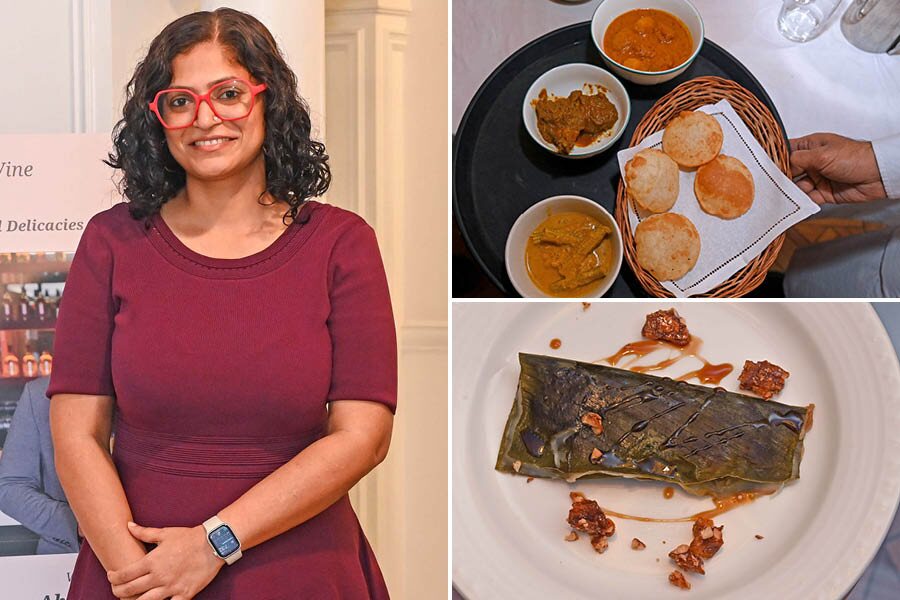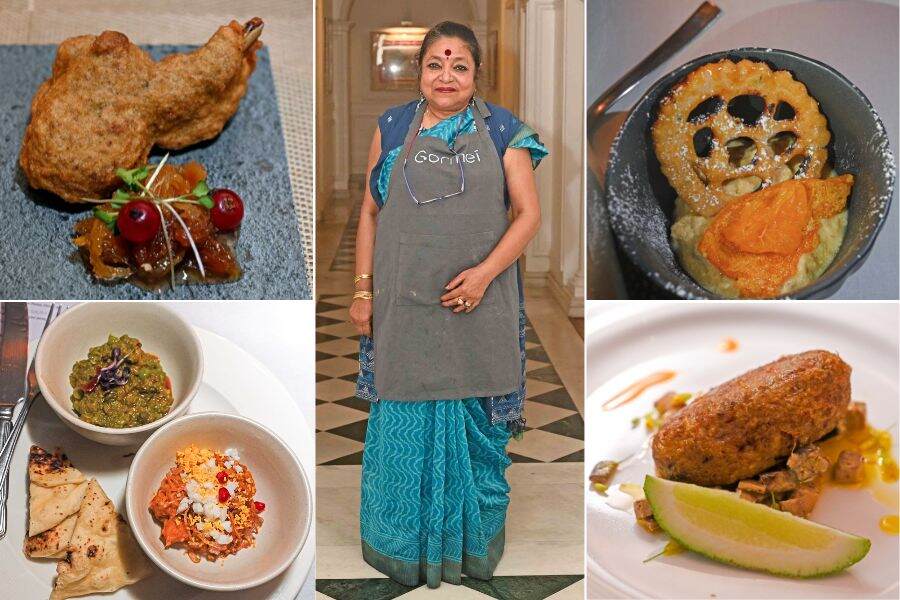Stepping away from the more widely known Goan Anglo-Indian fare, diners at The Gormei Table enjoyed a unique culinary experience on the rain-drenched monsoon evening of July 26 at Kolkata’s Glenburn Penthouse. Chef Shubhra Shankhwalker from Goa introduced guests to age-old recipes from her own Gaud Saraswat community, a Hindu community with a history spanning over 2,000 years. The chef crafted a five-course dinner using traditional recipes, seasonal produce, and local Goan ingredients, all perfectly paired with wines.
Welcome drinks

Water based kokum kadi and (right) Goan feni with lime soda
Before the main course, diners were treated to Jacob’s Creek sparkling wine and a unique cocktail featuring Feni from Goa, mixed with lime soda. Then arrived a water-based Kokum Kadi, alongside an assortment of Goan pickles and roasted papad. The homemade pickles included a tangy prawn pickle, a sweet and sour hog plum pickle, and a raw mango pickle. Chef Shankhwalker shared that the mango pickle recipe is a family heirloom, passed down from her grandmother to her mother, and now to her.
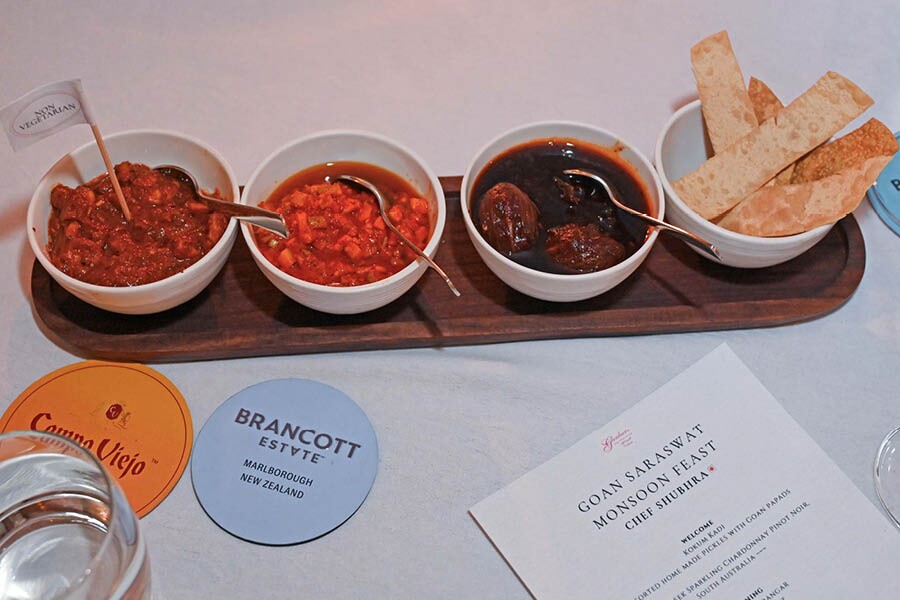
An assortment of Goan pickles
“My culinary journey began with this pickle,” she revealed. “Before the pandemic, I helped my mother deliver it in Goa under the brand name Aai’s. I eventually took over the production and expanded into a broader menu.” Chef Shankhwalker explained that Gaud Saraswat cuisine differs significantly from the popular Goan fare found in restaurants. For instance, while Anglo-Indian cuisine often uses vinegar, Gaud Saraswat dishes rely on tamarind as the souring agent and incorporate many local greens from Goa’s interior villages.
Starters and soup
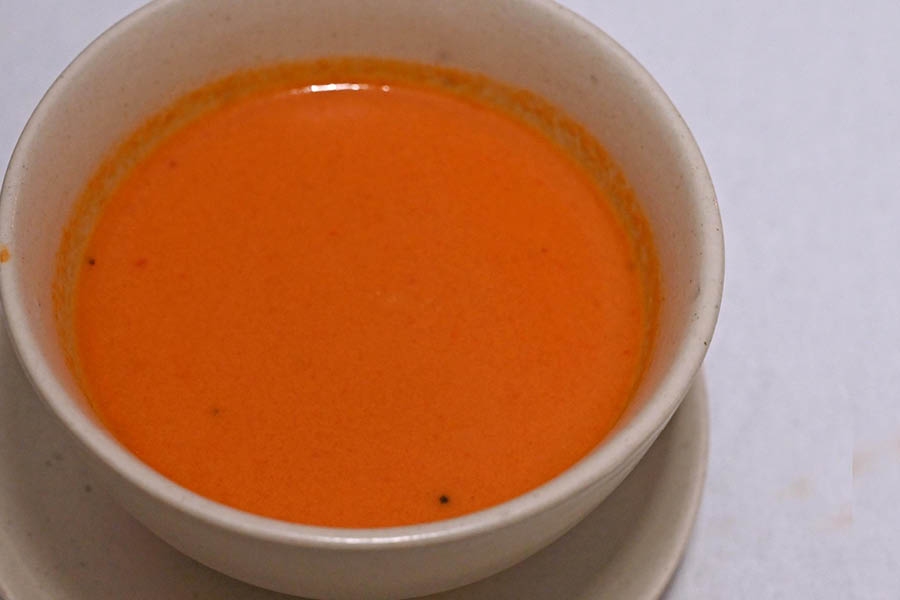
Tomato Saar
The dinner began with Sungtache Dangar, a flavourful Goan prawn cutlet with a crispy exterior and a soft, spiced prawn filling. This was followed by a comforting bowl of Tomato Saar — a light, tangy soup that felt like a warm hug on a rainy evening. Diners took a pause from their wine to savour the soup, which perfectly whetted their appetite for the main course.
Main course

Red rice with Bharile Nuste and (right) Sungtache Dangar
The main course featured a traditional Saraswat platter showcasing the best of Goa’s local and seasonal produce. Chef Shankhwalker, who runs a home diner at her farm in north Goa’s Camurlim, is known for growing her own vegetables and sourcing hyperlocal ingredients from local markets. She has cultivated strong relationships with local farmers and vendors, who often grow produce specifically for her. “Tonight, many of my ingredients are from Goa. I wanted to keep it as authentic as possible to bring out the true flavours of the cuisine. So, I flew in many items from Goa and sourced the rest locally from Kolkata,” she informed the diners.
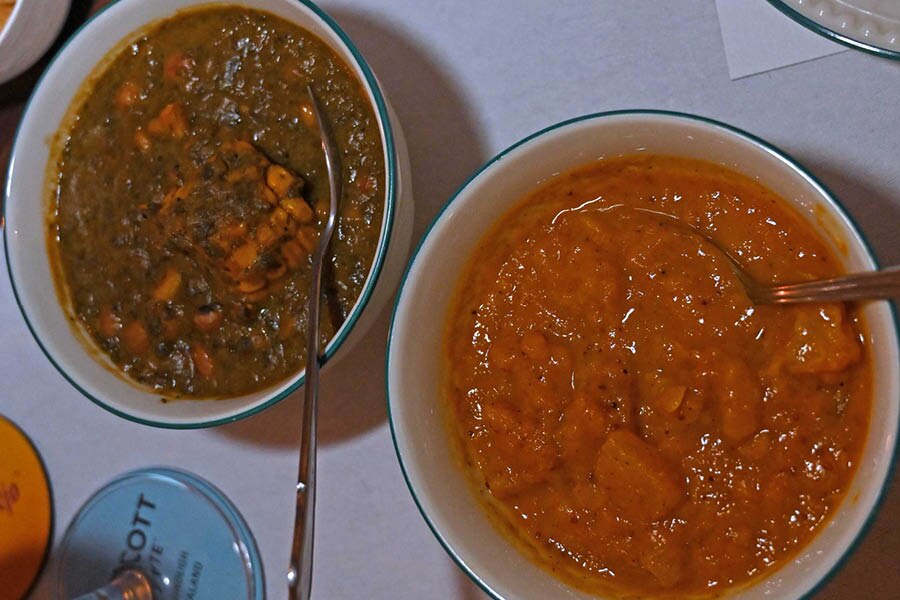
Aluchi Bhaji and Amyache Ani Ansache Tonak
For the main course, guests were first served red rice with Bharile Nuste, a boneless Goan-style stuffed mackerel fillet. It had a crispy coating hiding a meaty and juicy mackerel. Next, diners enjoyed Aluchi Bhaji, a dish made with colocasia leaves, jackfruit seeds, corn, legumes and coconut masala. Mildly spiced, this dish complemented the red rice beautifully, with the corn and jackfruit seeds adding a hint of sweetness. Another highlight was Amyache Ani Ansache Tonak, a tangy mango and pineapple curry that celebrated the monsoon season, perfect on its own. For non-vegetarian options, there was Tisryache Sukhhe, a clam sukka, a dry clam meat dish with onions and garlic, served in a shell. Diners could choose between Sungtache Hooman (prawn curry) and Chicken Shagoti. The juicy prawns with the tangy and nutty gravy went well with both red rice and the rice flour puris.

Sol Kadi
The main course was rightfully concluded with a Sol Kadi — a popular digestif in coastal western India made with kokum juice and coconut milk, flavoured with garlic.
Sweet ending

Patolios
For dessert, diners enjoyed a Goan twist on Bengal’s patishapta and pithe. Chef Shubhra served Patolios, which differ from Bengal’s sweet delicacies in several ways but would remind you of a patishapta. These are made by layering rice flour on a turmeric leaf and stuffing it with fresh coconut, jaggery, and cashew. The soft Patolios had a perfect balance of sweetness and the subtle flavour from the turmeric leaf also elevated the flavours.
Wine pairings
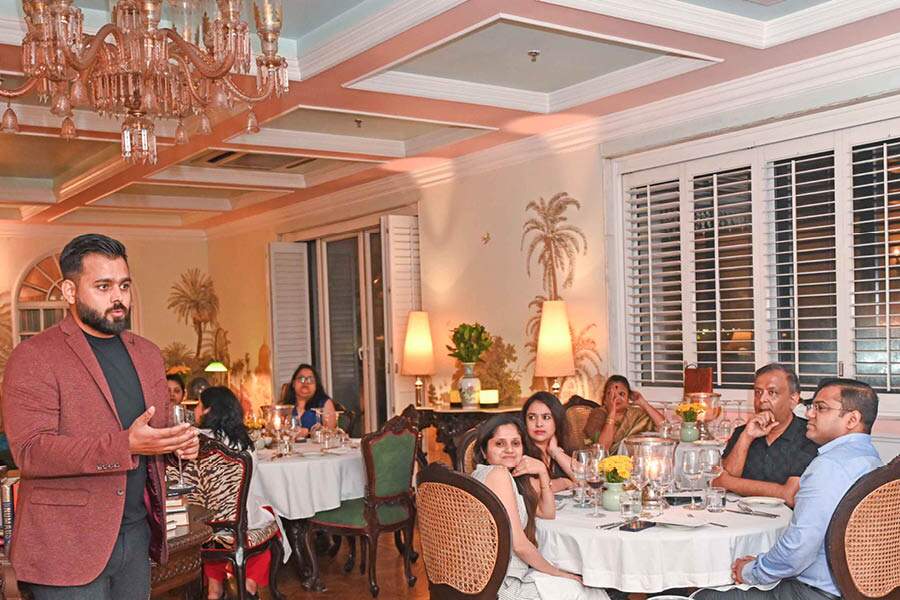
Pernod Ricard’s wine ambassador, Abhinav Dewan, talks about wine pairings with Indian food
Pernod Ricard’s wine ambassador, Abhinav Dewan, expertly paired wines with the traditional menu. The selection included Jacob's Creek Chardonnay Pinot Noir sparkling wine, Brancott Estate Pinot Noir red wine, Brancott Estate Sauvignon Blanc white wine, Campo Viejo Vino Blanco white wine, and Jacob’s Creek Rosé. The Rosé complemented the dessert with its fruity and sweet profile. Talking about the pairings, Abhinav Dewan said, “When it comes to wine pairings, it is very difficult to pair Indian flavours. Indian flavours are rich and spicy and you want to keep the pairings such that it compliments the food. I have tried to pair three wines, apart from sparkling and rose, with the starter and the main course.”
Patrons speak
The diners enjoyed a refreshing departure from typical Goan cuisine. Arkamitra Roy, an art advisor and foodie, said, “I loved the entire spread today. There was not a single miss when it came to the dishes. One dish was better than the other. I’m definitely looking forward to trying more of this cuisine at Chef Shubhra’s home in Goa.”
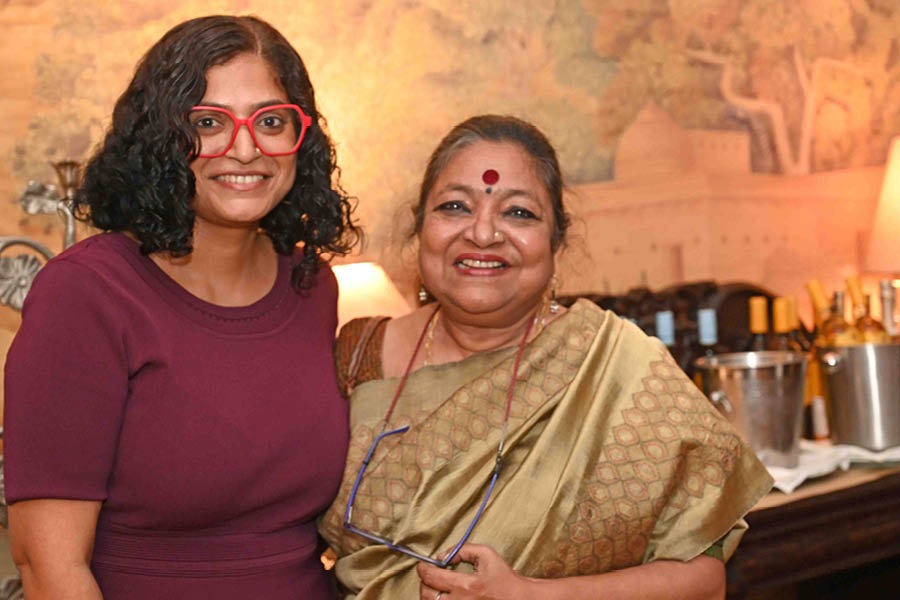
Chef Shubhra Shankhwalker with food historian Pritha Sen
Among the diners were food historian and revivalist Pritha Sen. It was not her first time tasting Gaud Saraswat cuisine, and she congratulated the chef for her successful table. Speaking about her experience, Sen said, “Gaud Saraswat cuisine is among India’s finest regional cuisines and I accord it a high status in our culinary map. Shubhra Shankwalkar did an outstanding job, bringing 200-year-old family recipes to the table and explaining all the nuances and how the same dish was cooked differently in her parental and marital homes, keeping to the intrinsic grammar. Her use of traditional local and seasonal produce was remarkable — from hog plums and jackfruit seeds to yam and colocasia greens, mango and pineapple curry, drumsticks and prawns, clams and the melt-in-the-mouth dessert steamed in turmeric leaves. In one word — superb.”
Finally, diners expressed their gratitude to Argha Sen, founder of Gormei, for bringing this enriching experience to the city. Speaking to My Kolkata, Sen said, “Though we first caught a whiff of chef Shubhra’s cuisine through our research in Goa only a few months back, this meal represents 200 years of culinary tradition. We are so glad to have been able to bring her family’s age-old Gaud Saraswat recipes and distinctive culinary traditions to Kolkata’s food enthusiasts at the Gormei Table at Glenburn Penthouse. Guests loved the new flavours, wonderful stories and her authentic, honest and fun cooking.”
